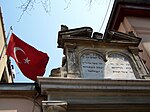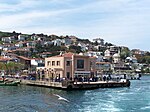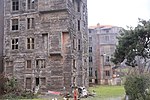Halki Theological School Gardens

The Halki Theological School Gardens are located in the top of the hill of hope in Heybeliada (halki island). Halki seminary, also known as halki theological school, stood there since 1844 as the lighthouse of Ecumenical Patriarchate of Constantinople. Due to its closure since 1971, it still has the byzantine church of holy trinity and is open to public. The site has no significant gardens after 1971. Reconstruction attempt begun in 2013 and is based on research of Landscape Architecture Laboratory of the Neapolis University Paphos under the supervision of Professor Nerantzia Tzortzi after the invitation of the Abbot of Monastery of Holy Trinity and Bishop of Bursa, Elpidophoros.
Excerpt from the Wikipedia article Halki Theological School Gardens (License: CC BY-SA 3.0, Authors, Images).Halki Theological School Gardens
Ümit Sokağı,
Geographical coordinates (GPS) Address Nearby Places Show on map
Geographical coordinates (GPS)
| Latitude | Longitude |
|---|---|
| N 40.8825 ° | E 29.095277777778 ° |
Address
Aya Triada Manastırı
Ümit Sokağı
34973 , Heybeliada (Heybeliada Mahallesi)
Turkey
Open on Google Maps






